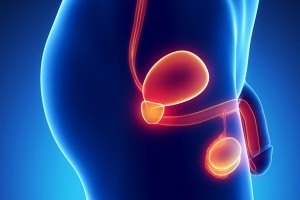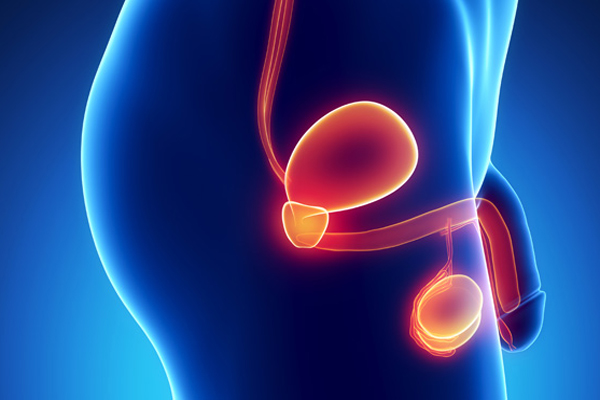Prostate Cancer Diagnosis: Shedding New Light
Photodynamic diagnosis, or photodiagnosis, entails the use of light-sensitizing substances (photosensitizers) that make abnormal cells “glow” or fluoresce when exposed to light, thus enabling the physician to actually see the diseased or cancerous tissue. The approach has been used increasingly for the detection and diagnosis of cancer, and also has applications for the detection of infectious diseases.
In 2008, scientists at the University of Munich (Germany) had reported on the use of a well-studied agent, 5-aminolevulinic acid, or 5-ALA, as a way to boost the production of a light-sensitive compound called protoporphyrin IX in prostate tumor tissues. The selective enhancement of this compound in malignant tissue is considered to be an essential requirement for effective 5-ALA-based photodiagnosis. (To learn more about the uses of 5-ALA, please see Chapter 1 of our book, The Medicine of Light.)
This year, researchers at Nara Medical University in Nara, Japan, reported on a photodiagnosis study in which 5-ALA was used to examine prostate cancer cells in the urine. These cells had been shed from the tumor before entering the blood and eventually the urine.Past attempts at detecting prostate cancer (PCa) cells in voided urine samples have been limited by very low sensitivity of the test method.
In this more recent study, urine samplees were collected from 138 patients with an abnormal digital rectal exam (DRE) or abnormal prostate-specific antigen (PSA) levels—both indicators of potential prostate cancer. After collecting the urine specimens, the researchers took a biopsy of the prostate gland. The urine specimens were then treated with 5-ALA and imaged by fluorescence microscopy. The samples were either positive or negative for fluorescence (as determined by cells with higher levels of protoporphyrin IX, a natural byproduct of 5-ALA).
Of the 138 patients, prostate cancer was detected on needle biopsy about 59% of the patients, and of those with prostate cancer, about 74% showed positive fluorescence. This is a very favorable level of sensitivity. In fact, this photodiagnostic approach was more sensitive compared with DRE and transrectal ultrasound and had greater specificity compared with PSA and PSA density. The incidence of positive fluorescence based did not increase with increasing total PSA levels, tumor stage or Gleason score.
The Japanese authors note that this is the first successful demonstration of PPIX in urine sediments treated with 5-ALA used to detect prostate cancer in a noninvasive yet highly sensitive manner. Additional clinical research will be needed to more fully assess the role of photodiagnosis for prostate cancer detection, as reported in the August 2014 issue of BMC Urology.
Support us by buying our book, The Medicine of Light, and ebooks from our Photoimmune Discoveries eBook Series.
Sources
Nakai Y, Anai S, Kuwada M, Miyake M, Chihara Y, Tanaka N, Hirayama A, Yoshida K, Hirao Y, Fujimoto K. Photodynamic diagnosis of shed prostate cancer cells in voided urine treated with 5-aminolevulinic acid. BMC Urol. 2014 3;14:59.doi: 10.1186/1471-2490-14-59.
Silva FR, Bellini MH, Nabeshima CT, Schor N, Vieira ND Jr, Courrol LC. Enhancement of blood porphyrin emission intensity with aminolevulinic acid administration: a new concept for photodynamic diagnosis of early prostate cancer. Photodiagnosis Photodyn Ther. 2011 Mar;8(1):7-13.
Zaak D, Sroka R, Khoder W, Adam C, Tritschler S, Karl A, Reich O, Knuechel R, Baumgartner R, Tilki D, Popken G, Hofstetter A, Stief CG. Photodynamic diagnosis of prostate cancer using 5-aminolevulinic acid–first clinical experiences. Urology. 2008 Aug;72(2):345-8. doi: 10.1016/j.urology.2007.12.086. Epub 2008 Apr 11.
© Copyright 2014, Photoimmune Discoveries, BV





 English
English Français
Français Deutsch
Deutsch Nederlands
Nederlands